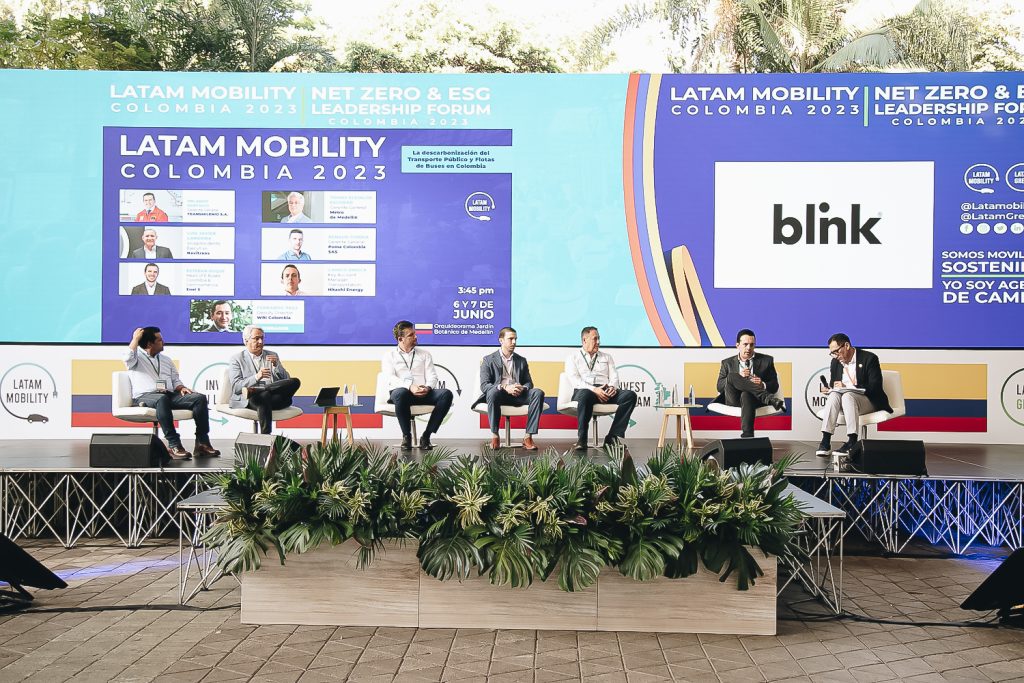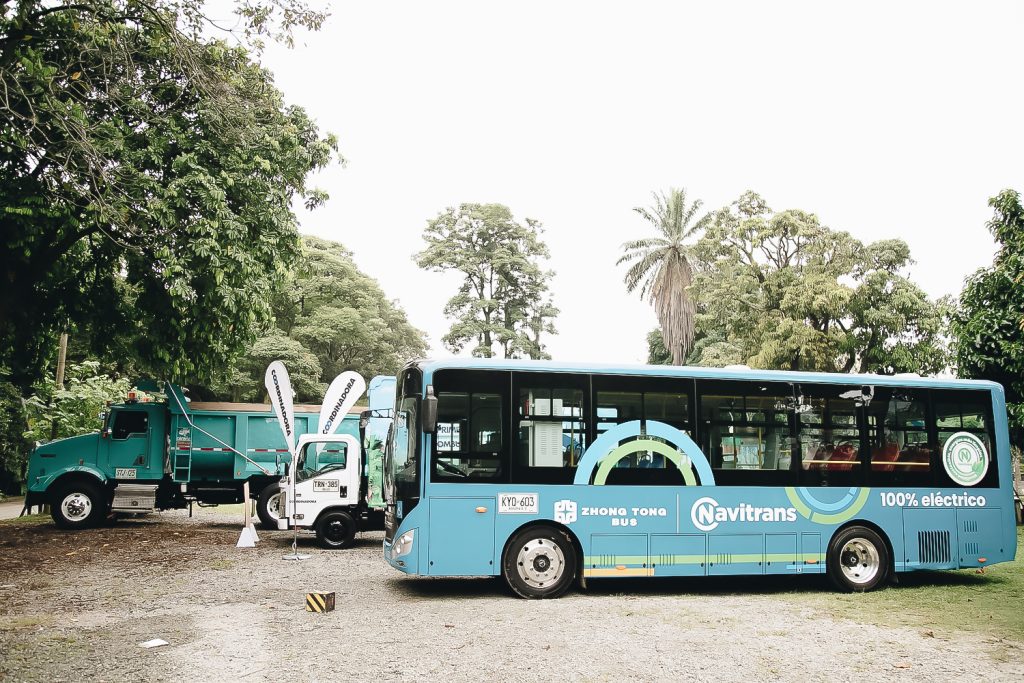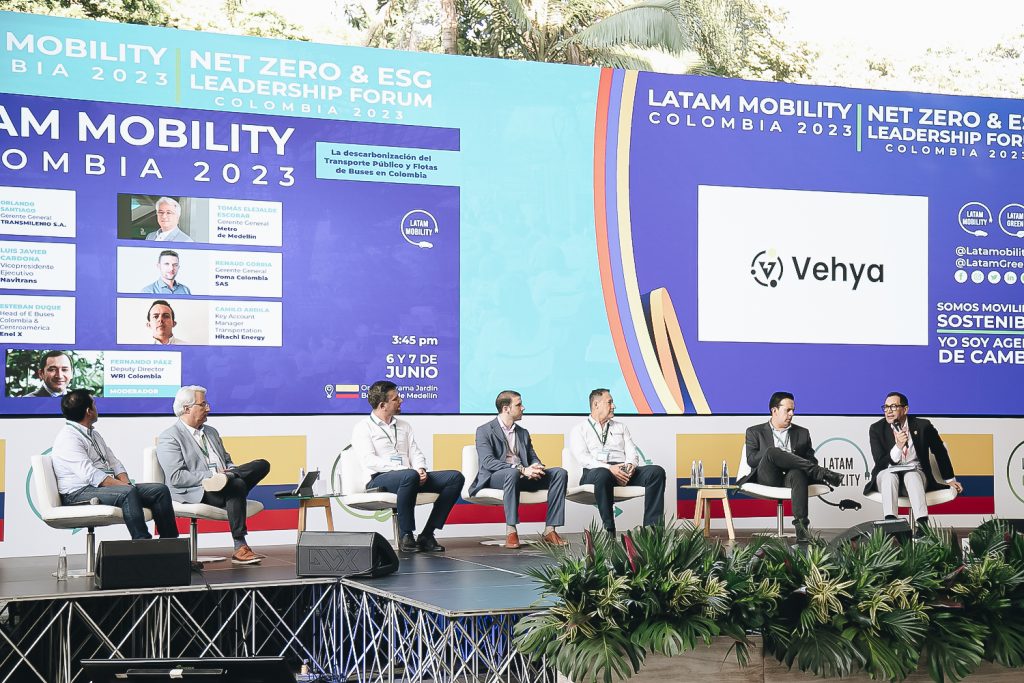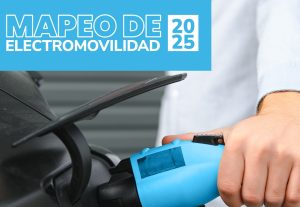Public transportation accounts for approximately 15% of carbon emissions (CO2), so it is essential to encourage the transition to sustainable vehicles that contribute to the environment and offer quality of life to people moving around major cities.
In this sense, the “Latam Mobility: Colombia 2023“, received representatives from the public and private sector to discuss “The Decarbonization of Public Transport and Bus Fleets in Colombia.”
Tomás Elejalde, General Manager of Metro de Medellín, highlighted the importance of the city’s transportation system for users, generating a culture of relationship with the communities and the environment by adding high technology standards.
“Metro de Medellín is a leader on the road to decarbonization with its 85-kilometer transportation network mobilizing 300 million passengers a year,” he stressed.
Related content: ALD Automotive, Renting Colombia, INTEIA, Nutresa and Sodexo Provide Efficient Solutions for Business Transportation
Elejalde explained that the Metro contributes to the reduction of approximately 414.000 tons of CO2 negatively impacting climate change.
“One of the great achievements is to integrate collective public transport, which is undergoing an orderly transition and has many available technologies. We are convinced that cities have to bet on mass public transportation operated by clean technologies,” he added.
Elejalde emphasized that transportation must be accessible, with wide coverage, and must also be supported and subsidized by the state.
Enel X’s Integrated Ecosystem
Esteban Duque, Head of E Buses Colombia & Central America of Enel X, highlighted the great progress of the company in Colombia with six electroterminals in Bogota, one of them the largest in Latin America with 40,000 square meters.
He also highlighted that they operate 778 electrified buses, of which they own 401, highlighting the importance of having a complete ecosystem that encompasses both the units and the charging infrastructure.
“We have taken a great step forward in the efficiency of the electroterminals, we have not only charging but also photovoltaic self-generation, all of them have rainwater collection for bus washing, intelligent and LED lighting, we integrate solutions to make the project viable”, explained Duque.
Precisely in the area of viability, he pointed out that they have developed a business model that has all the solution and profitability, for which a joint and flexible work is needed, taking into account that the reality of each city is different.

Poma: A Referent in Colombian Transportation
Poma Colombia also graced the Latam Mobility meeting with its great experience building cable transport systems, operating after-sales service and offering maintenance and operation solutions in Latin America.
Gorria Renaud, General Manager of Poma Colombia emphasized that they stand as a 100% electric solution, work that began many decades behind all the technological trends that are emerging today.
“We have solar panels in the cabins in the Medellin subway and we are pioneers in sustainable solutions for cable transport adapting to the context of the city to generate energy,” he detailed.
Renaud pointed out that the main goal is to have a self-sustainable and solar generation, taking advantage of the energy potential of countries such as Colombia and Brazil, especially in the field of hydraulic energy.
The Poma executive concluded that it is essential to establish legal standards, since there are no established regulations in Latin America.
The Impact of Transmilenio
Another successful transportation model in Colombia and an example for the region is Transmilenio, a system that mobilizes around 25,000 users a day with efficient trips and great social benefits.
In this regard, Orlando Santiago, General Manager of Transmilenio, pointed out that this means of transportation reduces trips from one hour to 15 minutes in a sustainable and friendly manner.
He stressed that in addition to functioning as an efficient transportation system, Transmilenio has become a great project of social and cultural impact, encouraging communities to integrate and promote the care of the neighborhoods in which they live.
In addition, systems such as Transmicable have gone from being more than a transportation solution to a means of tourism in which people have become interested in getting to know areas of the city that were previously inaccessible.
Navitrans’ technological buses
Luis Javier Cardona, Executive Vice President of Navitrans arrived at the Latam Mobility meeting with an innovative bus of the company that was exhibited during the two days to show its capabilities and eight-year warranty.
He explained that they are doing hard work contacting companies and organizations to explain what kind of technologies the vehicles use, with the aim of breaking paradigms on the transition to zero emission units.
“We are full of challenges: we have to transcend from buses to cargo transportation to special services companies, in the cities the most junk services congregate and are the ones that generate the most pollution. We have to make a transformation effort, working together with the authorities to transform cargo and passenger transportation,” Cardona concluded.

Hitachi and Two Centuries of Experience
Camilo Ardila, Key Account Manager Transportation of Hitachi Energy, highlighted how through key alliances and mergers the company has stood out in the market for 200 years with planning strategies and scalable projects.
“Planning is fundamental to reach any type of city through programs that are adaptable to the context of the cities that are growing and demanding more and more energy.”
He highlighted the growth of Bogota with systems such as Transmilenio or what is being built with the capital’s subway, taking into account the difficulties for access to energy.
“The cost of energy is not like before, it is necessary to optimize it, it is not so abundant, that is why it is necessary to plan to have a good operation, especially in small cities where resources are not so abundant“, he concluded.
The panelists agreed that there must be clear regulations that generate incentives to promote the decarbonization of public transportation and the region.




